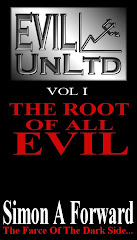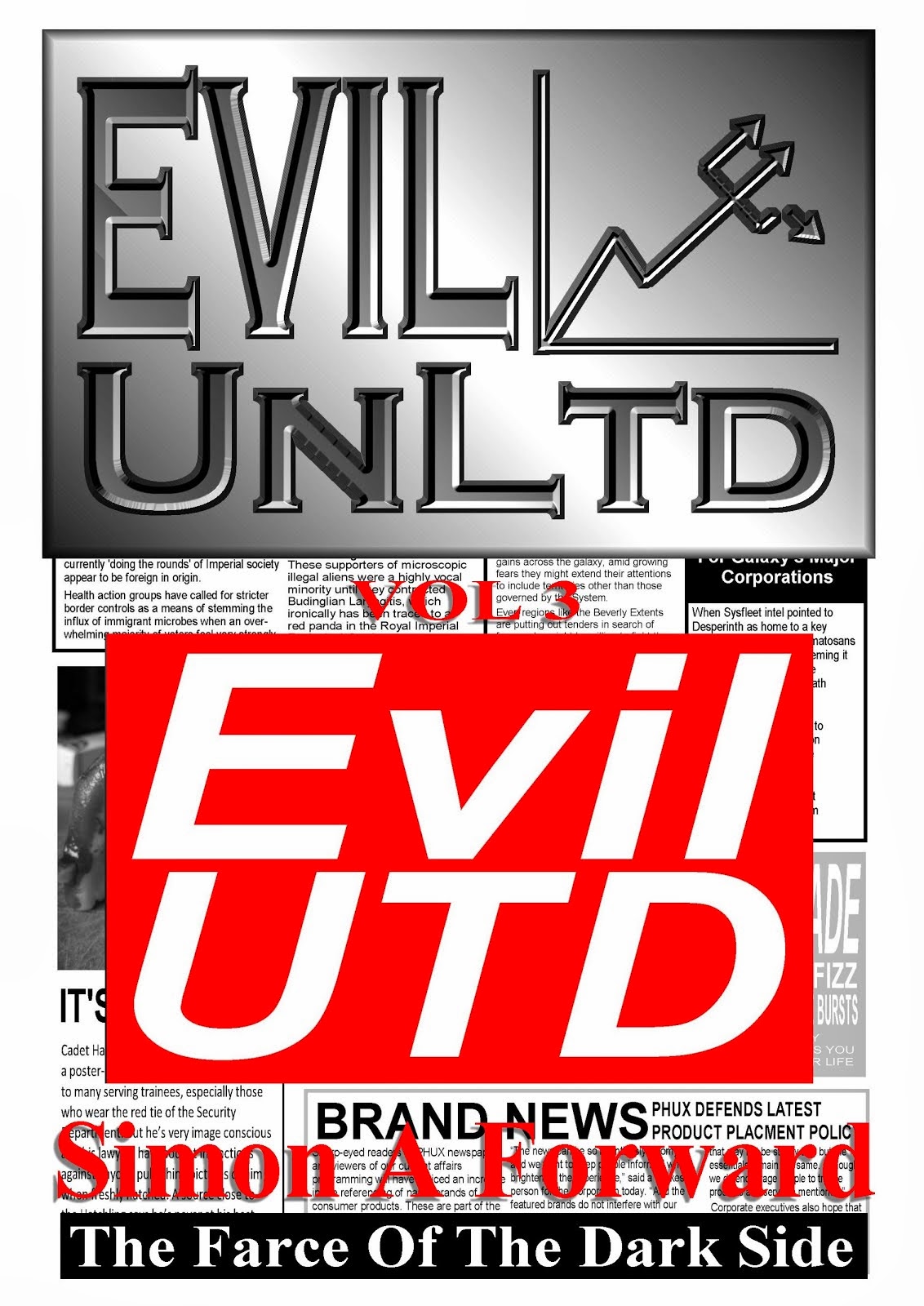
Protest or Forget. Those are your two choices. And, let's face it, there's many a Doctor Who story where that'd be all you need. Thankfully, The Beast Below isn't one of them. So I went for a third option: Record & Rewatch.
What would happen? Would everything disintegrate? Would it all fall apart like a lot of other Who stories on second viewing?
No, I'm glad to say. I was as impressed with this the second time around. And although The Eleventh Hour had to handle the additional burden of breaking in a new incarnation and introducing a new companion and, well, new everything, this episode is a much more complicated beast.
A strange future world, part-Bladerunner, part-Eastenders. Creepy carnival faces in fairground fortune-telling booths. Hooded figures with keys. A floating city built around a mysterious 'beast below' and a story constructed around an impossible choice. There's a lot going on in this one.
Added to which, we're still getting to know the new Doctor and companion – and it says something that Moffat can still deliver the sense of wonder and newness of it all, even to seasoned sofa-based time travellers like myself, in the scene where Amy (Karen Gillan) floats in space outside the TARDIS. It's a magical moment, captured in Amy's expression and the intriguing extra touch of a voice-over 'recap'. Can we assume from this that young Amy is keeping a journal? I know I would. The stream of Facebook status updates would be constant when life got that exciting.
The Doctor is full of joie-de-vivre here too, revelling in the beginnings of another new friendship and the opportunity to show off the wonders of the universe to another eager companion. Matt Smith is like Troughton on Duracell, slipping smoothly between Energiser Bunny and the quieter, older, wiser avuncular figure that we know lies underneath that youthful appearance. Watch him in the TARDIS as he tips his head towards Amy, wrings his hands and speaks in soft, slightly gravelly tones. That's Troughton. Any minute he'll be bouncing off the walls like Tigger, but it's rarely over-amped or out-and-out manic. There's a nice measure of control to it, from an actor who knows the value of understatement.
Watching these two play off each other continues to be a real treat. There's a degree of mirroring going on. Moments where, say, Amy hits a quirky note and the Doctor mimics it beautifullly. And when they're separated, Amy becomes the Doctor. Well, I exaggerate, but watch just how incredibly Doctorish she is when confronted with the hole in the road and the KEEP OUT sign. She's more than just your average plucky companion, this girl. It's key to this story, in particular, as we discover later: when she's shown the truth in the voting booth, she immediately recognises the implications for the Doctor – and hits that Forget button and thinks to leave herself a warning message; and more importantly, at the end of it all, she is the one to piece it all together. It demonstrates a great many qualities, not only smarts and initiative, but tremendous courage of conviction when she plants Liz 10's hand on that Abdicate button. And a remarkable understanding of the Doctor, given that she's only been travelling with him such a short while.
But that's the point. She knows the Doctor already. That childhood encounter left an indelible impression on her. She knows all about loneliness. And that quiet revelation about him being the last of his kind is all she needs. It's the missing piece, all she needs to really know what makes the Time Lord tick. (It's also, by the way, a wonderfully understated exchange, when the Doctor tells her – an emotional allusion to his past, it put me in mind of Troughton talking to Victoria of his family in Tomb Of The Cybermen. It seems to be a signal: no more angst-ridden, self-pitying Doctor. Acknowledge the pain, move on. Thank god.) Watching all that dawn on her is a fascinating, brilliant moment and builds a satisfying climax out of what comes down to the press of a button. It's possibly the most satisfying button-press in all of Doctor Who.
It's handled so well, it's only a shame the script felt the need to spell it out further in the subsequent scene between Amy and the Doctor. Still, superfluous bit of dialogue aside, the hug it prompts, in front of that starscape, is perfect.
Perfect is not a word I get to use very often with regard to Doctor Who. So I'd better rein in this rampant positivity, perhaps by switching focus from the Doctor and Amy to other elements of the story.
Best not include Liz 10, because the idea of a streetwise kick-ass gun-toting monarch is inspired and to then go and cast Sophie Okonedo in the role, well, again you're veering dangerously close to perfection. “I'm the bloody Queen, mate. Basically, I rule.” Hilarious. I could query her lineage, since she talks about her family and then refers to the Doctor's escapades with Elizabeths I and II (as well as Henry XII). And as far as I know she can't be descended from both. But what the heck, she gets some good jokes out of it and to be honest my biggest grumble would be simply that she's not in it nearly enough and she spends some of that time behind a mask. We need more Liz 10! Her subjects demand it.
Inspired casting extends to the minor role of Hawthorne, especially since I remember Terrence Hardiman as Reinhardt from Secret Army. Okay, he turned out to be one of the more decent (Luftwaffe) officers, but you see the guy, you think Nazi. So to have him sitting there behind the scenes, playing Big Brother and watching proceedings on his monitors is a terrific way to steer our suspicions in the wrong direction. But I'm meant to be finding stuff to complain about so, erm, yeah, it's a shame he doesn't get to do much.
I loved the Starship UK concept. The image alone gave me a warm, fuzzy feeling because it reminded me of Uluru City in my Big Finish audio, Dreamtime. (Inspired by those Okie Cities of James Blish.) Add to that the impossibility of its travelling through space without an engine and I'm thinking we're facing a scenario along similar lines: a 'ship' powered by belief alone. And, as it turns out, the stability of Starship UK's existence is maintained by a (false) belief, just in a very different sense. Doesn't rule out there being an Uluru City out there in the Who universe somewhere. But, damn and blast, that's just another reason to love this episode.
The truth is, the only real problems, flaws, omissions or questions – and what you call them will largely depend on how easily they are explained or remedied and/or how forgiving you are – are to be found in the scenario itself, of a starfaring city mounted on the back of a starwhale and a police state enforced by the carnival-booth Smilers. I think that when you structure such an involved setup around the need for that very specific kind of resolution, there are bound to be a few missing nuts and bolts.
The vomiting starwhale scene was great (“This isn't going to be big on dignity!”), for example, but I did wonder how they were chucked up into an overspill pipe and not hurled into space. Also, there was a breathable atmosphere in the starwhale's mouth and yet there were clear gaps between its teeth, open to space. We have to assume an atmospheric bubble that encloses the city also includes the whale and presumably Terran air is at least not toxic to it – under normal circumstances we can assume it 'swims' through a vacuum and can at least go without any kind of air for extended periods, possibly doesn't breathe at all. And it's not too great a stretch to assume that ejected material gets funnelled up its whale-ish spout rather than out through the mouth.
The Smilers were wonderfully creepy – just as creepy when grinning as when they revolved around and frowned. They're an oddity, for sure, not your first choice as the trappings of a police state, but a totalitarian regime in Doctor Who needs exactly this kind of quirkiness. You have to pity poor Timmy who gets the full demonic glare from a Smiler (and dropped into 'hell') just for underperforming in class and riding an elevator. Makes me wonder if there's a fourth face reserved for the genuinely unruly kids. (A pickier, rational part of me did want to know the mechanics behind the materialisation of that third face.) We do see some children down in the dungeons of the Tower later and it emerges that the Beast likes kids. We don't see many, but it's reasonable to suppose that most Starship UK kids are well-behaved and kids eventually grow up. Ah, but at what age do they get sent back up top, are they forced to press a Forget button or are they fed to the whale once they become palatably old enough?
For me these were by no means fatal flaws, so I'm going to call them questions. Easily answered ones too. A tightening of a screw here and there and the whole thing stands up fine.
No, I think if there is a 'problem' with the story it's that because it's a complex scenario squeezed into a 45-minute episode it's obliged to explain a fair amount and it hits the brakes somewhat in the Tower scene in order to allow for slightly too much expository dialogue. To be honest, I don't know how you'd avoid that and it is redeemed by that conclusion and some outstanding moments from the Doctor (“Nobody human has anything to say to me today!”) and Amy (“If you were that old, and that kind, and the last of your kind...”)
There's a good message in there too. It's not just Save The Whale. It strikes me that the starwhale is a metaphor for the Earth: if only we'd quit exploiting the life out of her, she'll provide for us plentifully. That's a very green message, but it's fitting because I'm left green with envy at the writing talent.
Which, sorry, is more of that rampant positivity, I know. The lead-in to the next episode (Churchill and the shadow of a Dalek on the wall!) further fuelled my excitement. At the time of writing, I've already seen that episode once. We'll have to see what a second viewing does to this insanely spiralling enthusiasm of mine...
Ooh, cliffhanger.








